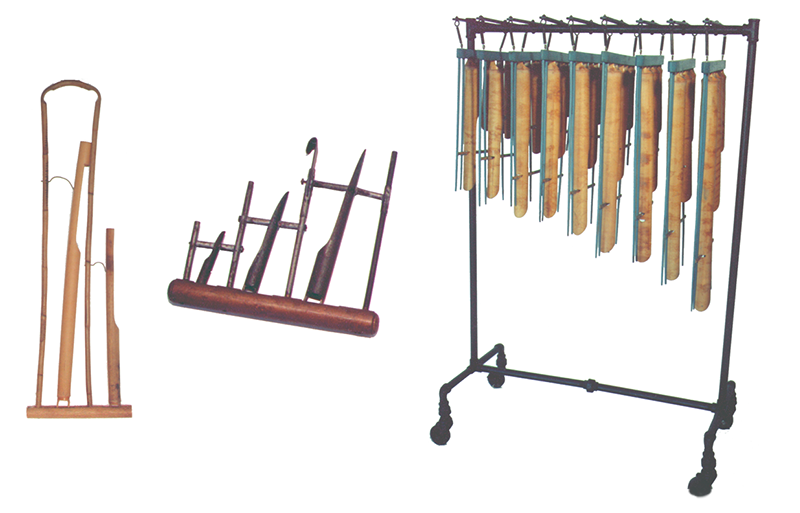by
Rhythm Scene Staff
| Apr 13, 2023

(L to R): Bass Angklung, Deagan Aluminum Chime, Chromatic Bamboo Angklung
Angklung are idiophonic instruments native to Indonesia. Tradi- tionally, large numbers of them are shaken for ceremonial dances. They can also be played by a group of musicians, each of whom has one instrument of differing pitch in each hand. The entire group performs a single melody in much the same way as a handbell choir, with each performer shaking an angklung at the appropriate time in the melody.
Each angklung consists of two or three bamboo tubes of differing lengths tuned in octaves. The tubes are mounted in a frame so that a slot on each tube aligns into a cross-piece that strikes the tube when the instrument is shaken. Carl Orff included unpitched angklung in his “Catulli Carmina” and “Weihnachtsspiel,” and scored “Prometheus” for two angklung pitched in G-flat and B-flat.
In the early 20th century, J.C. Deagan developed an American version, called Organ Chimes or Aluminum Chimes, constructed from metal. When mounted on a rack, which allowed one or two people to perform solo pieces, Deagan’s Organ Chimes became a popular novelty instrument for vaudeville and radio shows.
BASS ANGKLUNG
Donated by Emil Richards
One of several large bass angklung owned by the PAS Museum, this instrument is 45 inches long and sounds the pitch F. Note that these tubes are not slotted and are sounded by striking the large curved section of the frame as the instru- ment is shaken.
DEAGAN ALUMINUM CHIME
Donated by Emil Richards
A single J.C. Deagan Aluminum Chime. This is distinguished from Deagan’s higher quality Organ Chimes, which have four sounding tubes instead of three, although they are in reality the same instrument. This chime is 9 1/2 inches long and tuned to E-flat. These were available in mounted, chromatic sets of up to 49 chimes, with a range of four octaves.
CHROMATIC BAMBOO ANGKLUNG
Donated by Emil Richards
A set of chromatic bamboo angklung, mounted upside-down, so that they can be played by one person. These angklung range in length from 19 inches to 32 inches.
Learn more about percussion history and historical instruments in the Rhythm! Discovery Center online collection, always available to the public at rhythmdiscoverycenter.org.